

Story
인간의 기억과
운동 학습의 비밀을 풀다
Unraveling the Secrets of Human Memory and Motor Learning
데이터사이언스학부 심리뇌과학전공 김성신 교수
Professor Kim Sungshin, Major in Cognitive Science
- 글 김현지
- 사진 이현구
- Writing Kim Hyun-ji
- Photograph Lee Hyeon-gu
Scroll Down
Talking, eating, drinking, walking, and playing; they all require movements. From these activities necessary to survival and others such as hobbies, humans lead their lives through various movements. Professor Kim Sungshin, a neuroscientist, has received great attention by focusing on the “changes in the brain” while a person learns movement and studying the brain science principle of acquiring and mastering new motor tasks.
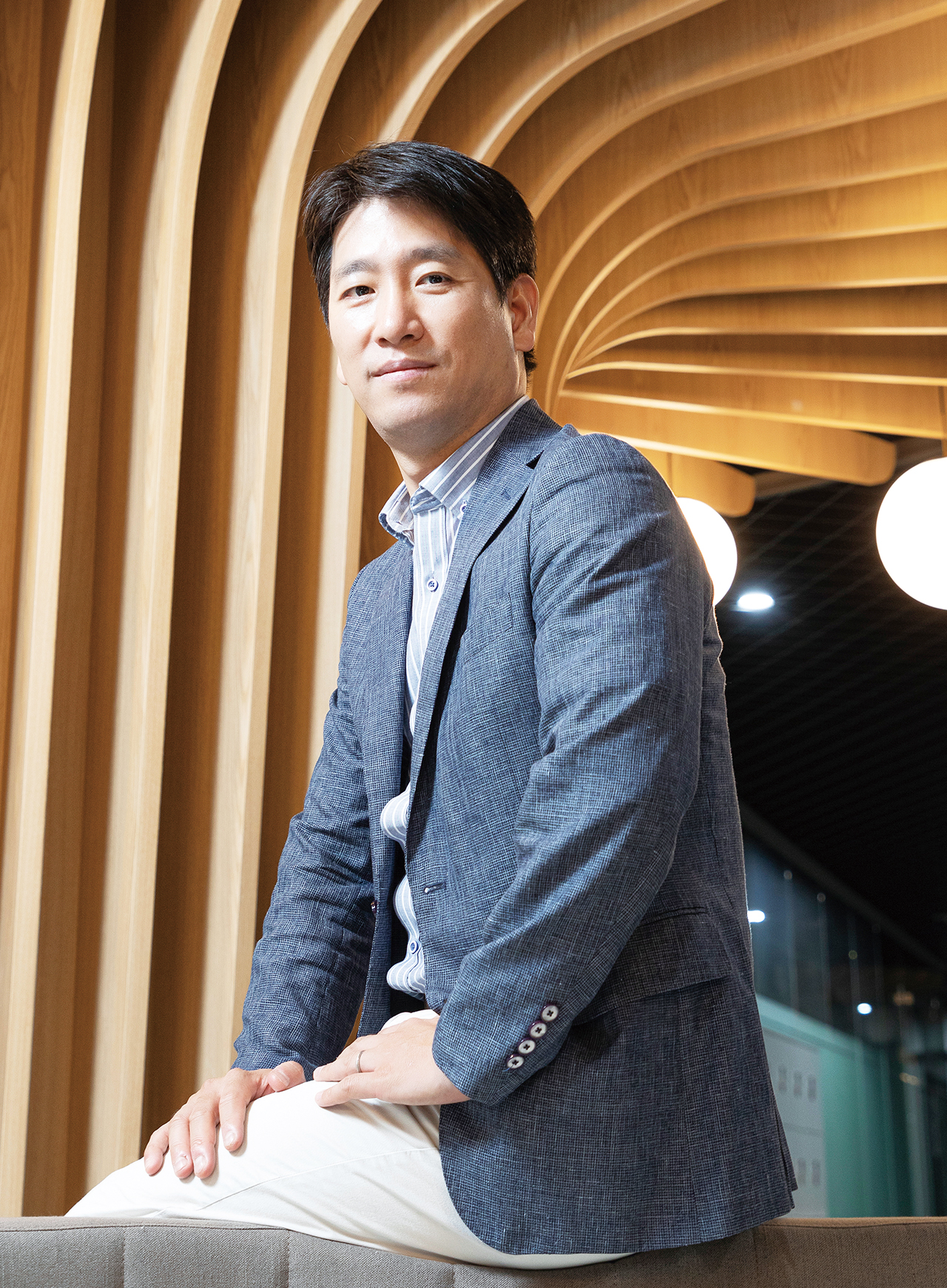
학습과 기억을 연구하는 신경과학자
김성신 교수 연구의 핵심 주제는 학습과 기억이다. 인간을 대상으로 다양한 학습과 기억 과제를 실시하고, 뇌이미징 기술을 활용해 과제 테스트 과정에서 일어나는 뇌의 변화를 관찰한다. 학습과 기억의 뇌과학적 원리를 발견하고 이를 통해 인간 지능에 관해 이해하고자 하는 것이다. 김성신 교수의 연구에서 특징적인 것은 학습과 기억 중에서도 ‘운동 학습’에 초점을 맞췄다는 점, ‘인간’을 대상으로 한다는 점이다.
“대부분 학습이라고 하면 공부를, 기억이라고 하면 사건이나 사실에 대한 기억을 떠올립니다. 하지만 움직임을 익힌다는 것 역시 학습이 필요한 일입니다. 그리고 학습한 결과를 저장하는 기억이 없다면 움직임을 배울 수 없습니다. 우리의 삶 자체가 운동 학습의 연속이라 할 수 있어요. 일어나는 법, 걷는 법, 밥 먹는 법과 같이 생존에 필수적인 것부터 컴퓨터 자판을 두드리고 악기를 연주하고 운전을 하는 것, 입술과 혀의 움직임을 통해 말을 하는 것 모두 운동 과제를 학습한 결과입니다.”
인간은 태어나서부터 죽을 때까지, 평생에 걸쳐 다양한 운동기능을 습득한다. 우리가 일상생활에서 수행하는 기본적인 운동기능들은 만 3세를 전후로 처음 습득해 오랜 기간 반복을 통해 숙달시킨 것들이다. 운동 학습이 가능한 이유는 운동 기억이 존재하기 때문이다. 이 기억은 어떤 사건이나 사실을 기억하는 명시적 기억과는 다른 암묵적 기억에 속한다. 명시적 기억은 육하원칙에 따라 말로 설명할 수 있지만, 암묵적 기억은 말로는 완전하게 표현할 수 없다.
“운동 기억은 트라우마나 감정과 관련된 기억과 함께 암묵적 기억의 대표적인 예입니다. 자전거 타는 법을 생각해보세요. 자전거를 어떻게 타는지 어느 정도는 말로 표현할 수 있지만, 실제로 자전거를 타는 것과는 별개의 문제죠. 소위 ‘몸이 기억한다’는 게 운동 기억입니다. 새로운 운동 과제를 습득해 숙달시키면 운동 기억 덕분에 무의식적으로, 습관적으로 해낼 수 있게 됩니다.”
하지만 이렇게 운동기술을 습득하고 익숙해지는 과정에서 인간 뇌에 어떤 변화가 일어나는지 상세히, 정확히 밝혀진 바는 없었다. 또 운동기능에 관한 연구는 많은 신경과학자가 관심을 기울이는 분야지만 동물을 대상으로 하는 연구가 대부분이었다.
“운동 시스템이나 스포츠과학에 대한 연구는 많지만, 인간을 대상으로 운동 학습과 기억의 신경과학적 기전을 밝히는 연구는 많지 않습니다. 국내에서는 제가 거의 유일하다고 할 수 있어요. 전 세계적으로도 연구자가 적어 관련 학회에 모이는 사람들이 겨우 수백 명 수준이죠. 특이하게도 이웃나라 일본에는 연구자가 많은 편이어서 관련 공동연구를 진행하고 있습니다.”
A neuroscientist that studies learning and memory
The key topics of Professor Kim Sungshin’s research are learning and memory. Prof. Kim conducts various learning and memorizing tasks targeting humans, and observes the changes that occur in the brain during the task testing, using brain imaging technology. The purpose of this study is to discover the brain science principle of learning and memory, and to understand human intelligence through it. What is special about Professor Kim’s research is that it focuses on “motor learning” in the learning and memory processes, and that it targets “humans.”
“Most people think of academic studies for learning, and memories of events or facts for memory. However, acquiring movements also requires learning. Also, if you do not have the memory that stores the learning results, you cannot learn movements. Our life itself can be said to be a continuing process of motor learning. Everything that is essential to survival, such as getting up, walking, eating meals, to typing on computer keyboards, playing instruments, driving a car, and speaking through the movements of lips and tongue, they are all results of learning motor tasks.”
Humans acquire various motor skills throughout life, from birth to death. The basic motor functions that we perform in daily lives are what we first learned around the age of three and practiced through a long period of time. Motor learning is possible because there is motor memory. This memory is an implicit memory, different from an explicit memory, which remembers an event or a fact. Explicit memory can be explained verbally according to 5W1H (who, what, when, why, how), but implicit memory cannot be fully expressed in words.
“Motor memory, along with the memories related to trauma or emotion, is a representative example of implicit memory. Think about how you ride a bike. You may be able to explain in words how to ride a bike, but it is different from actually riding one. Motor memory is so-called muscle memory. When you acquire and master a new motor task, you will be able to do it unconsciously and habitually, thanks to motor memory.”
However, it has not been clarified in detail what changes occur in the human brain in the process of acquiring and mastering these motor skills. Research on motor functions is a field that many neuroscientists are interested in, but the studies have been done mostly on animals.
“There have been many studies on motor systems or sports science, but not many on the neuroscientific mechanisms of motor learning and memory in humans. I am about the only one conducting studies in this field in Korea. Even in the rest of the world, there are few researchers, and only a few hundred people gather at relevant conferences. Strangely enough, there are many researchers in Japan, our neighboring country, so we are conducting joint researches.”
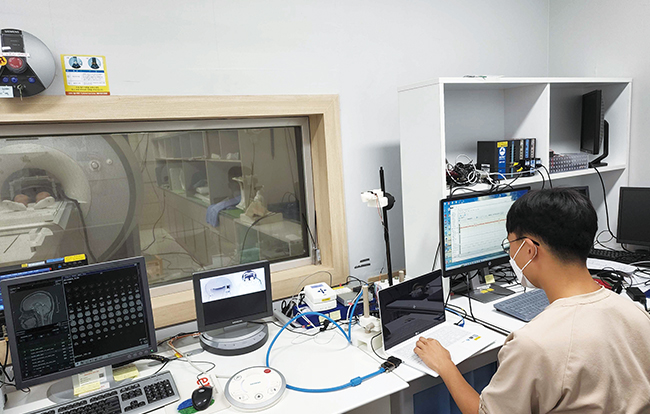
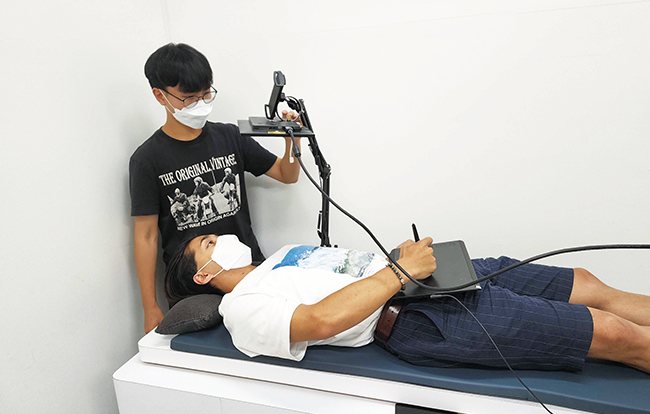
몸이 기억하는 운동 학습에 관한 비밀
뇌이미징 기술을 적용해 체계적으로 설계된 실험을 진행한 결과 김성신 교수는 인간의 ‘운동기술 습득 및 숙달 과정’을 설명할 뇌과학적 원리를 발견해냈다. 해당 연구는 미국국립과학원이 발행하는 세계적 학술지 『미국국립과학원회보(PNAS)』에 소개되며 관심을 모았다. 연구는 김성신 교수가 박사과정을 마치고 독일의 막스플랑크연구소에 머물며 떠올린 아이디어가 바탕이 됐다. 당시 휴머노이드 로봇을 연구하는 연구실에서 방문연구원으로 일하던 김성신 교수는 로봇에 적용하는 강화학습에 관심을 가졌고, 강화학습을 기반으로 한 인간의 운동기술 습득이라는 주제에 몰입했다.
“2017년 기초과학연구원에서 지원하는 ‘차세대 기초연구 리더 프로그램’ 수혜자로 선정되며 본격적인 연구를 시작했습니다. 제가 가진 아이디어로 실험을 디자인했고 수원 소재 뇌과학이미징연구단과 협업해 시너지를 냈죠. 새로운 운동 과제를 처음으로 습득하고, 그것이 숙달되는 전체 과정을 압축적으로 보여주는 실험을 수행하며 인간의 뇌에서 어떤 변화가 일어나는지를 관찰했습니다.”
김성신 교수 연구팀은 컴퓨터 커서를 손가락 움직임으로 조절해 화면 상의 타깃을 맞추는 비디오 게임 형태의 실험을 설계했다. 그리고 학습자가 손가락과 커서 움직임 간의 관계를 학습하는 동안 기능성 자기공명영상장치(fMRI)를 통해 뇌의 변화를 관찰했다. 뇌 영역 중 올챙이 모양의 미상핵(caudate nucleus)에 주목한 연구팀은 테스트가 진행됨에 따라 운동기술 습득 시 얻어지는 동기부여와 보상에 대한 정보가 미상핵의 머리에서 꼬리 부분으로 이동하는 것을 발견했다. 또 미상핵의 머리 부분은 대뇌 전두엽(판단·추론 담당), 꼬리 부분은 대뇌 운동피질(운동기능 담당)과 상호작용하고 그 강도에 따라 개인별 운동 능력 차이를 예측할 수 있음을 파악했다. 이번 연구는 쾌락·보상·동기부여를 담당하는 미상핵이 새로운 운동기술 습득과 숙달에 관여하는 신경과학적 기전을 인간 실험에서 세계 최초로 밝혔다는 데 큰 의미가 있다. 이를 위해 fMRI 장치 내에서, 기존 연구에서 사용되지 않았던 새로운 실험 과제를 세계 최초로 디자인했다는 점도 특별하다.
“다양한 학습 방식 중 인간에게 주어지는 보상을 통해 어떻게 운동 학습이 이루어지는지를 파악한 연구입니다. 뇌질환 중 파킨슨 증후군은 기저핵이라는 보상회로에 문제가 생겨 나타나는 것인데, 저희 연구와 매우 관련이 깊죠. 현재 경두개자기자극을 통해 보상회로를 활성화하는 연구에 관심이 많습니다. 이런 연구가 성과를 거둔다면 추후 파킨슨 증후군 등 뇌질환 치료에도 큰 도움이 되리라 생각합니다.”
The secret of motor learning that the body remembers
As a result of systematically designed experiments applied with brain imaging technology, Professor Kim Sungshin discovered a brain science principle to explain “the process of acquiring and mastering motor skills” of humans. The study was introduced in Proceedings of the National Academy of Sciences (PNAS), a world-renowned academic journal published by the National Academy of Sciences of the USA, and attracted attention. The research was based on an idea that Professor Kim came up with while staying at the Max Planck Institute in Germany after completing his doctoral course. At the time, Professor Kim, who was working as a visiting professor in a laboratory researching humanoid robots, grew interested in the reinforcement learning applied to robots and immersed himself in human’s acquisition of motor skills based on reinforcement learning.
“I started the full-scale research as I was selected for the "IBS Young Scientist Fellowship" of the Institute for Basic Science in 2017. I designed the experiment with my own ideas, and collaborated with the Center for Neuroscience Imaging Research in Suwon, Korea, to create synergy. We conducted experiments that show the whole process of acquiring a new motor task for the first time and mastering it, and observed changes in the human brain.”
Professor Kim Sungshin’s research team designed experiments in the form of a video game in which computer cursors were adjusted with finger movements to hit a target on the screen. While the learner was learning the relationship between the movements of the fingers and the cursors, changes in the brain were observed through functional magnetic resonance imaging (fMRI). The research team focused on the caudate nucleus, which resembles a tadpole, among the brain regions, and found out that as the test progressed, the information on motivation and reward obtained by learning a motor skill moved from the head to the tail of the caudate nucleus. In addition, it was found that the head of the caudate nucleus interacts with the frontal lobe of the cerebral cortex (responsible for judgment and reasoning) and the tail interacts with the cerebral motor cortex (responsible for motor functions), and that it is possible to predict differences in individual motor abilities through the intensity. This study is significant in that it was the first in the world to prove that the human caudate nucleus, which is responsible for pleasure, reward, and motivation, plays an important role in acquiring and mastering a new motor skill. It is also significant that the research team has developed a novel motor learning task for the fMRI experiment, which was never used in previous studies.
“This is a study to understand how motor learning is achieved through rewards given to humans, out of the many learning methods. Among the brain diseases, Parkinson’s disease is caused by a problem in the reward circuit called the basal ganglia, and it is closely related to our research. Currently, I am interested in research on activating the reward circuit through transcranial magnetic stimulation. If this research is successful, it will be of great help in the treatment of brain diseases such as Parkinson’s in the future.”
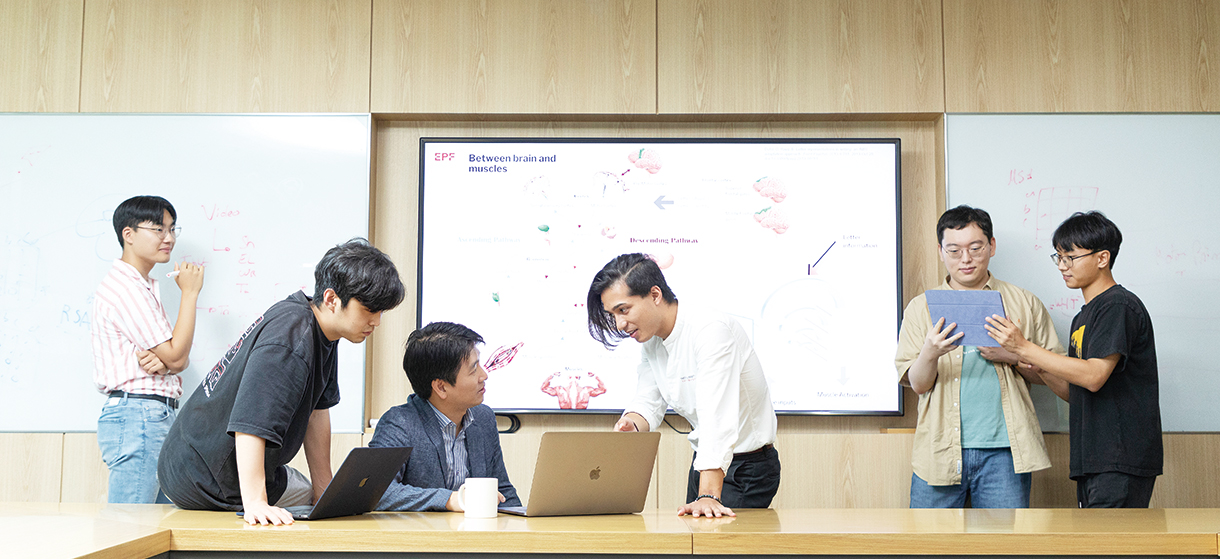
운동기술 향상과 뇌질환 극복에 기여할 연구
김성신 교수는 후속 연구를 통해 운동기술 숙달로 일어나는 뇌의 변화가 얼마나 장기적으로 지속되는지 파악할 계획이다. 이외에도 다양한 연구를 진행하고 있다. 현재 삼성서울병원과 함께 초기치매나 가벼운 수준의 인지장애 환자를 치료하기 위한 뇌 자극 방식 임상연구를 수행 중이다. 경두개자기자극이라는 비침습적 뇌 자극을 통해 인간의 연관 기억력을 향상할 수 있다는 김성신 교수의 연구를 치매 치료에 적용하려는 시도다. 또 경두개자기자극기를 개발한 국내 기업과도 산학연구를 수행하면서 이러한 자극 방식이 운동 학습 능력을 향상해 운동재활을 촉진할 수 있는지 테스트 중이다. 더불어 인공지능 기술의 하나인 심층 강화학습을 이용해서 인간의 뇌에서 일어나는 학습 기전을 연구하고 있는데, 인공지능과 뇌과학의 융합연구로서 현재 스위스의 명문 대학인 로잔공과대학(EPFL)과 공동연구를 수행하고 있다.
“여러 기관, 기업과 협력하며 뇌와 관련한 실험적 연구와 이론적 연구를 진행하고 있습니다. 뇌이미징 기술로 뇌 신경세포의 활동을 관찰하고 비침습적 뇌 자극을 통해 감각 기관의 기능이나 학습 및 기억력 등을 향상할 수 있는지 다양한 가능성을 확인하고 있죠. 제 연구가 파킨슨 증후군이나 자폐증, 우울증, 치매 등과 같은 뇌질환 극복, 인공지능 설계나 기계 학습 등과 같은 미래 기술 발전에 기여하길 바랍니다.”
알파고 개발로 전 세계적인 파장을 일으킨 구글 딥마인드의 데미스 하사비스는 인공지능 연구가 유일하게 참고할 수 있는 것이 인간의 뇌라고 말했다. 하늘에 새가 없었다면, 인간은 하늘을 나는 꿈을 꾸지 않았을지 모른다. 인간의 뇌를 연구하고 그 학습과 기억의 비밀을 푸는 일은 새로운 지식을 창조하고 기초과학의 발전을 가속하는 일이다. 김성신 교수는 남다른 각오로 자신만의 연구 영역을 넓혀가고 있다.
Research that will contribute to improving motor skills and overcoming brain diseases
In the follow-up research, Professor Kim Sungshin plans to find out for how long the changes in the brain due to the mastery of motor skills continue. He is also conducting various other researches. Currently, he is conducting clinical research on brain stimulation methods to treat patients with early stage dementia or mild cognitive impairments jointly with Samsung Medical Center. It is an attempt to apply Professor Kim’s research ideas that the non-invasive brain stimulation called transcranial magnetic stimulation can improve humans' associative memory for dementia treatment. He is also conducting industry-university research with a domestic company that developed a transcranial magnetic simulation device to test that this stimulation method can improve motor learning abilities to accelerate motor rehabilitation. In addition, he is studying the learning mechanism using reinforcement learning, an artificial intelligence technology, convergence research of artificial intelligence and brain science, jointly with the Swiss Federal Institute of Technology in Lausanne (EPFL).
“We are collaborating with various organizations and companies to conduct experimental and theoretical research on the brain. By observing the activity of the brain neurons with brain imaging technology, we are examining various possibilities to improve sensory functions, learning, or memory through non-invasive brain stimulation. I hope that my research can contribute to overcoming brain diseases such as Parkinson’s, autism, depression, and dementia, and to future technology development such as artificial intelligence design and machine learning.”
Demis Hassabis of Google DeepMind, who had a great impact globally with the development of AlphaGo, said that the only reference for artificial intelligence research is the human brain. If there were no birds in the sky, humans may not have dreamed of flying. Researching the human brain and unlocking the secrets of its learning and memory is creating new knowledge and accelerating the development of basic science. Professor Kim Sungshin is expanding his research area with resolution.
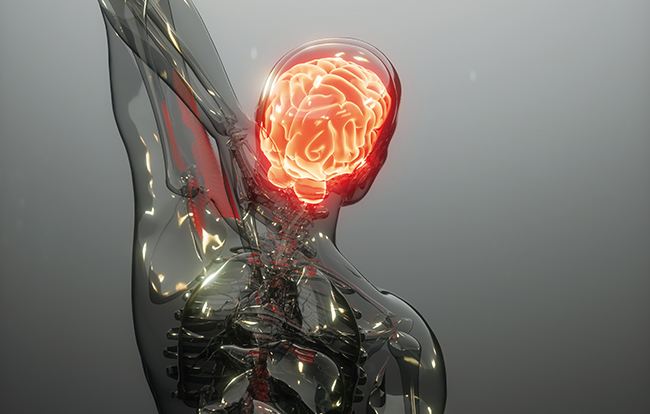
인간의 기억과 학습의 비밀을
푸는 연구는 다양한 뇌질환 극복과
미래 기술 발전을 이끌 밑거름이다
Research to reveal the secrets of human memory and learning is the foundation for overcoming various brain diseases, and for future technology development.
